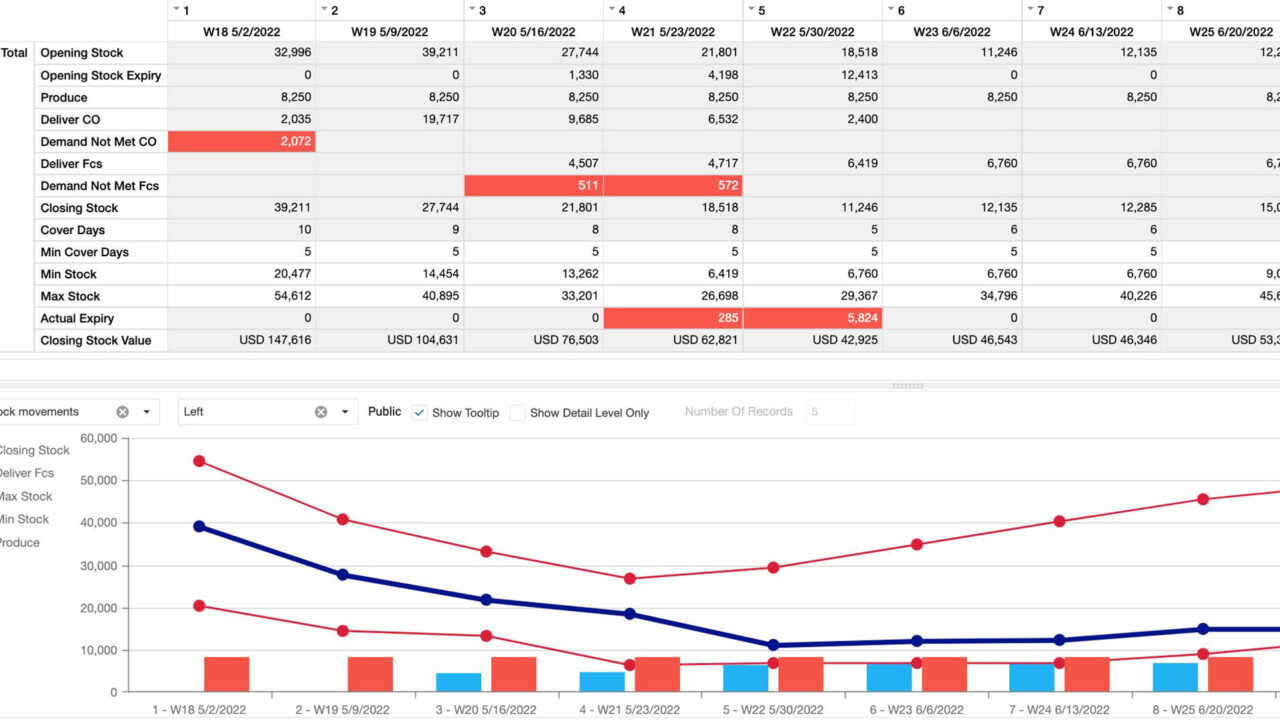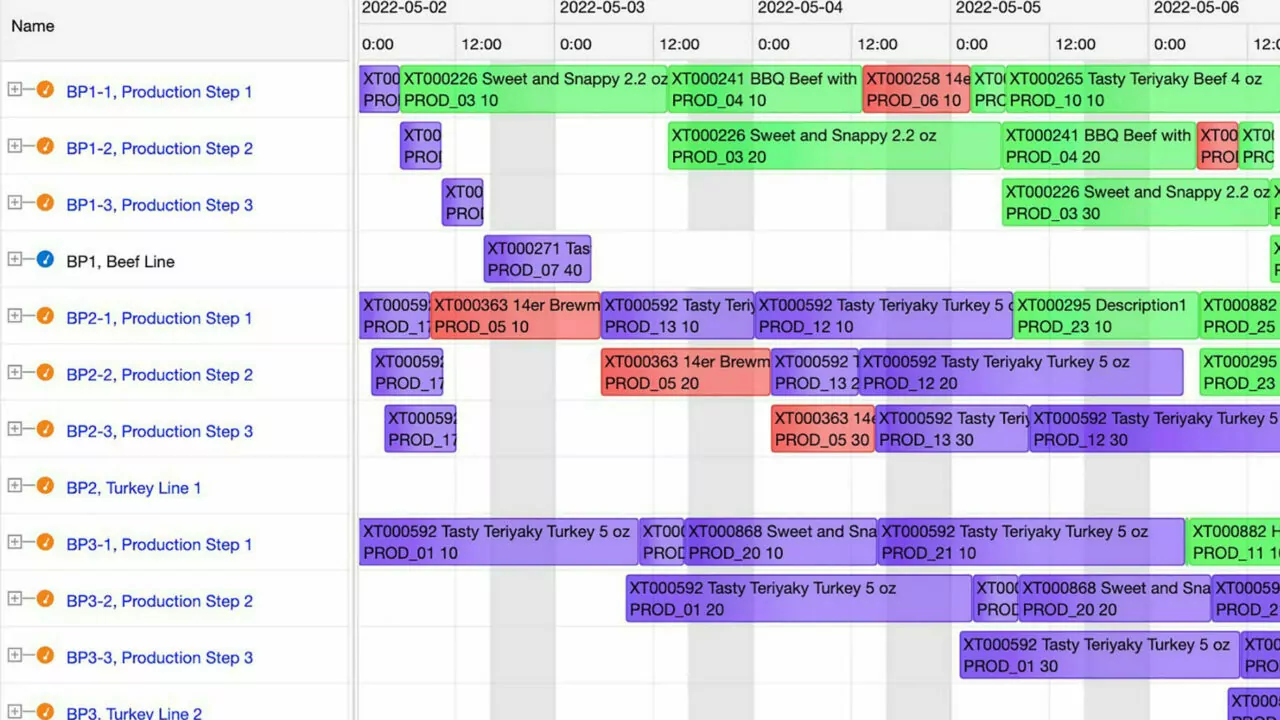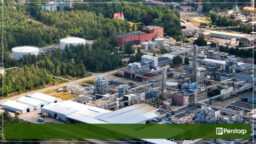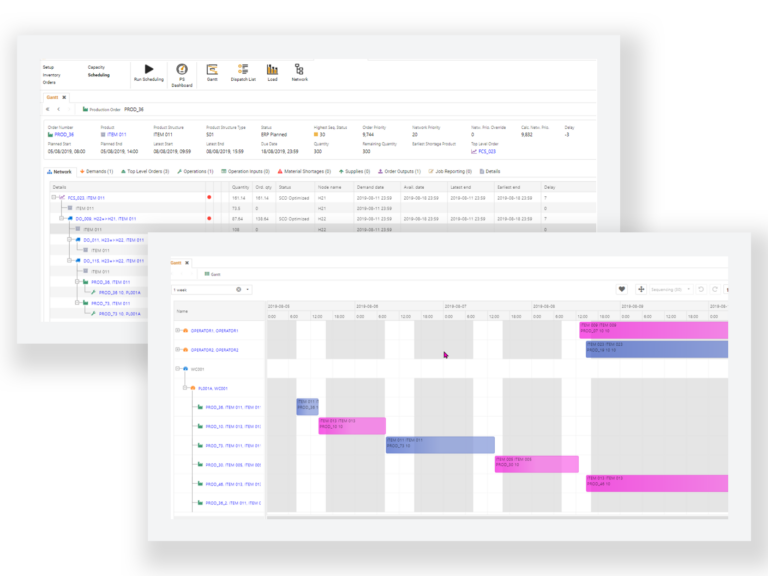This post discusses what type of companies should consider investing in a production scheduling solution and what benefits you can expect.
Production planning vs production scheduling – what’s the difference?
We sometimes hear people talk about production planning and production scheduling as if they’re the same thing. But, while closely linked, they are two separate entities with different purposes.
Production planning
A production plan shows what and how much you need to produce – when and where. The plan is typically prepared in weekly buckets, with a planning horizon from today to anywhere between 3 and 18 months in the future. The preferred horizon will depend on company-specific factors such as industry, procurement and production lead times, and seasonality.
Modern supply chain planning software optimizes sourcing, inventory, production, and distribution for maximum profitability. As a result, the weekly production plan is part of the overall supply chain plan.
Example of a weekly production plan (as part of an optimized supply chain plan)

If your production environment is relatively straightforward and the production plan only requires minor adjustments before being sent to the floor, this level of granularity may well be enough.
Production scheduling
While some companies can execute directly from the production plan, others require a more detailed daily production schedule to operate efficiently.
A best-in-class production scheduling tool provides precise instructions to the factory floor. The schedule breaks down the first weeks of the production plan into a set of optimal production orders, which are then sequenced down to minutes and seconds on specific resources according to production rules.
As with the production plan, your scheduling horizon comes down to how much forward visibility you need to operate your factory efficiently.
Example of a production schedule (Interactive Gantt Chart)

Best-in-class production scheduling – do I need it?
Some manufacturing companies stand to benefit more from best-in-class production scheduling than others. The need for a dedicated scheduling solution largely depends on the following two criteria:
How complex is your manufacturing environment?
Scheduling problems grow exponentially, and even moderately complex manufacturing environments are too difficult to schedule without proper system support. A best-in-class scheduling tool does all the heavy lifting and quickly optimizes the most complicated planning problems.
How capital and resource-intensive is your manufacturing?
For manufacturers that rely on expensive production equipment and resources, even minor schedule improvements can amount to significant savings. A best-in-class scheduling tool will help you maximize asset utilization and minimize waste.
Even moderately complex production environments are too tricky to manage without the right tools.
Benefits of best-in-class production scheduling
If your business falls into one of the above categories, what benefits can and should you expect from a best-in-class solution?
As with most business cases, some benefits are easier to quantify than others. To make the correct decision, it’s vital that you consider both tangible (hard) and intangible (soft) benefits when preparing your business case.
Hard benefits are relatively easy to quantify. Examples include reduced labour costs and setup times and increased revenue. Soft benefits are harder to quantify but can often be of equal, sometimes even greater importance – especially when considering their longer-term impact. Examples include improved information and data quality, better communication, and shorter response times.
We can separate the business benefits into different categories:
1. A one-company approach
- Clear visibility – When everyone looks at the same numbers, you get a common view of the supply chain across the organization. The plan is also available to anyone with the right access.
- Trust in the numbers – Minimize time spent debating and collating info. Spreadsheets often take on a life of their own, and the business ends up with multiple versions of the truth.
- Speed-to-action – A best-in-class solution dramatically shortens the time to generate a new schedule. Schedulers can react more quickly to supply, demand and capacity changes.
- Planning Automation – Automating scheduling decisions saves time and money. While not necessarily leading to a reduction of the planning team, planners are freed up and can focus more on dealing with exceptions and other value-adding activities.
2. Customer experience
- Forward visibility – With a clear understanding of what can and can’t be delivered, it is easier to communicate with customers, make changes and manage expectations.
- Increased Service Level – A best-in-class solution can fine-tune the production plan to maximize delivery service. As a result, you’ll avoid producing some orders too early while others too late.
- Meet changes in demand – The ability to re-generate schedules quickly means that the business can respond promptly to changes in demand.
3. Optimal decision making
- Decision Enablement – Say goodbye to your spreadsheets and start making decisions based on facts instead of gut feeling.
- Optimal plan – Without the right tools, generating a schedule that maximizes delivery service at the lowest cost is almost impossible. There are simply too many rules and constraints to take into account. A best-in-class tool uses mathematical algorithms to determine the optimal schedule – every time.
- Resource utilization – A best-in-class solution helps you manage your resource pool efficiently, highlighting any overtime requirements.
4. Scenario planning
- New demand – Quickly assess the impact of a new order on the current schedule. Can you accept it without jeopardizing the delivery of existing orders?
- Production line down – Immediately see the implications when a production line goes down and quickly re-optimize the schedule according to the new circumstances.
- Late supply – Automatically adjust the schedule if a material arrives late.
- Impact of investments – Reduce risk and make better decisions by simulating an investment in production capacity before you commit capital.
5. Inventory planning
- Align supply with production – a best-in-class solution will align material sourcing with the production schedule, helping to optimize stock.
- Waste reduction – starting and stopping lines often generate material waste and waste relating to cleaning.
- Shortages – A best-in-class production scheduling application will consider material availability. Planners are alerted early to future shortages, giving them time to address the issue before it becomes a real problem.
6. Risk mitigation
- Dependency on individuals – Planning spreadsheets tend to become more and more complex over time. When this happens, companies often end up with only one person knowing how the planning spreadsheets work. If this person is absent, there’s nobody to generate the plan, potentially causing significant disruption. Implementing a supply chain planning system removes this risk.
What return on investment should I expect?
Now to the critical question – What level of return can you expect from a best-in-class production scheduling solution?
There’s a lot to consider. We’ve discussed the challenges different industries face – and even within the same industry, two companies can have vastly different challenges and opportunities. Your current maturity level will also impact the calculation – e.g. are you already using dedicated scheduling software, or are you still relying on MRP and Excel?
While it’s impossible to determine the exact benefits without a detailed analysis, the below numbers are based on our experience and can be used as guidance when preparing a business case.*
- 50-80% reduction in time to produce the schedule
- 10-30% decrease in setup time/ clean time
- 10-20% improvement in customer service level
- 10-20% reduction in overtime
- 30-50% reduction in inventory / WIP
* Numbers based on our experience implementing Optimity’s Production Scheduler
Find out more about best-in-class production planning and scheduling.
Get all the latest industry trends, updates & news from Optimity
















